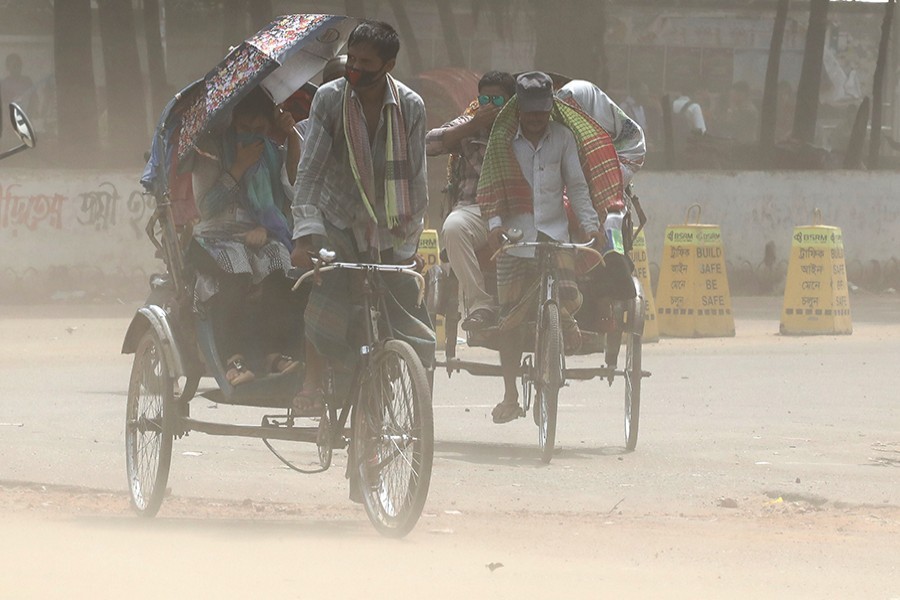Environmental activists and segments of the general people concerned about Dhaka's deteriorating air pollution must have felt upbeat about a disclosure. Amid a pervasive gloom prompted by the ongoing ravages of the Covid-19 pandemic, the news serves as a possible prelude to Dhaka's emergence as a pollution-free city. It might sound like a pipedream to many. But it's true and it comes from a global survey. According to a study made by the US-based IQAir Visual, Dhaka occupied a place among the top 10 pollution-free cities on last July 22-31. The Bangladesh capital has long been notorious for its horrendous level of air pollution. The global watchdog also found Dhaka among the world's top five pollution-free cities at certain stretches of time from July 24 to 30. The measurement was based on a basic requirement --- good air quality.
The city hardly expected such a compliment, which could be termed serendipitous. But the score was based on prevailing realities. It had a lot to do with the pandemic-time shutdowns leading to a drastic fall in the movement of motorised transport. The other factors included incessant rain which reduced dust and many pollutants and the Eid-time rush for village homes in July-end. Many environmentally aware people also single out the pandemic-induced indefinite closure of factories in the older part of Dhaka, as well as the veritable non-function of the brickfields on the city outskirts. The spewing of smoke from the latter is viewed as a contributor to the western and southern Dhaka's pollution.
To speak in brief, as shown by the IQAir Visual, Dhaka has proved that it can emerge as a pollution-free city. Or else it could not have been placed among the higher-scoring countries. According to the watchdog's Air Quality Index (AQI), the score of Dhaka remained less than 100 in most of the days in last July. The AQI score of 0-50 is recognised as 'good' air quality. The score of 51-100 means the air quality is 'moderate', the performance with 101-150 being considered 'unhealthy for sensitive groups', and the score 151-200 is viewed as unhealthy in general. The index finds the score of 201-300 as 'very unhealthy', with 301 and above being hazardous. To the dismay of the environmental authorities, the air AQI of Dhaka normally remains above 200. On occasions it shoots up to a level close to 300.
IQAir Visual's placing of Dhaka among 5.0 to 10 most pollution-free cities in the world and the Bangladesh capital's taking pride in it may appear to have happened by default --- courtesy Covid-19. But it's not at all a chimera. Even people in the mid-60s have seen the pollution-free and tree-covered idyllic Dhaka. The quintessential character of a romance-filled big city cannot be lost into the abyss of a chaotic, pollution-ridden and dust-covered Dhaka. The relevant authorities have just to cut down on the mushrooming private cars, the ubiquitous presence of which is becoming nightmarish. The same applies to the recklessly driven minibuses. According to traffic movement experts, large and comfortable buses are expected to add to the process of the return of the pollution-free Dhaka. The process should be made to gain speed --- with the prospect of the completion of the elevated metro rail nearing completion, despite the off-and-on disruptions caused by the corona impacts. With this transport mode in place, Dhaka is set to be free of a large volume of its pollutions. At the same time the dingy factories ought to be shifted to far-away areas. They are the roots of many a pollutant.


